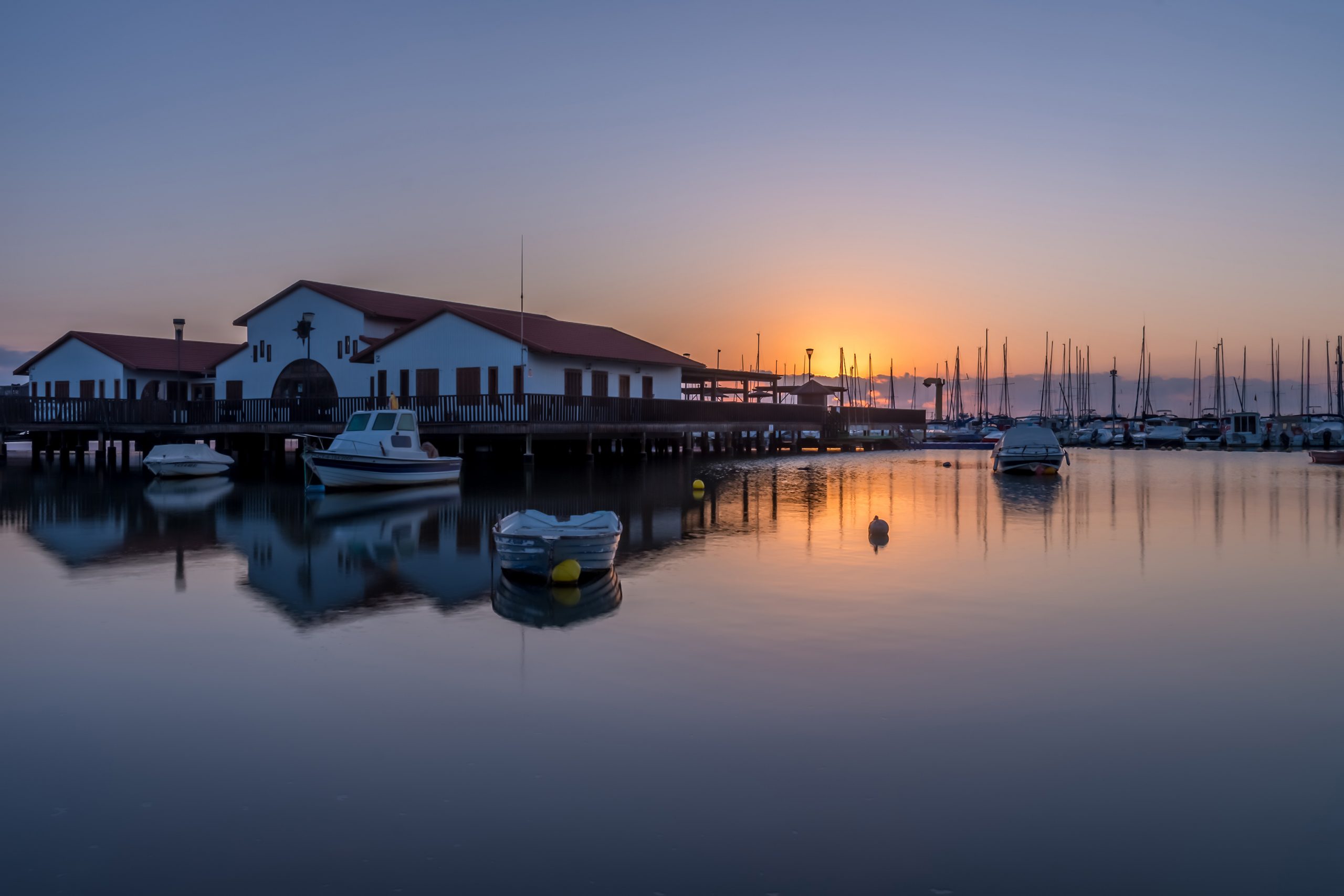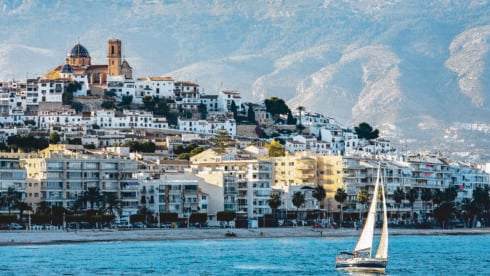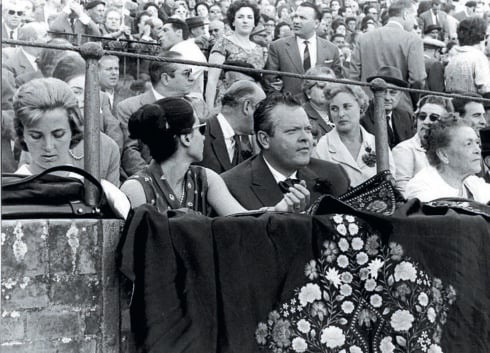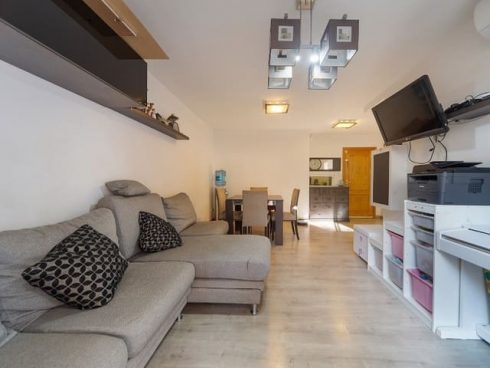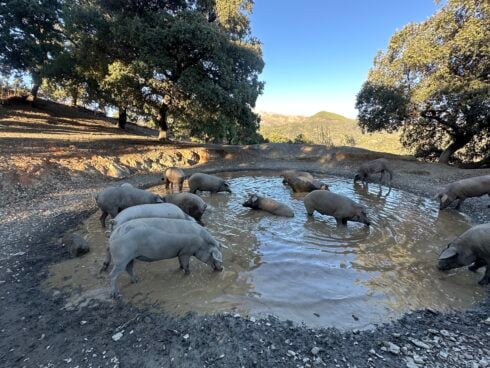THE resort of Los Alcázares lies in Murcia region, on the Costa Calida, in the heart of the Mar Menor region. It takes its name from the ancient palaces that were built along the shore during the Middle Ages, and extended into the sea.
With about 175,000 inhabitants, expanding to 250,000 in high season, Los Alcázares offers a home from home for Brits, combining modern culture with traditional Spanish lifestyle. The resort has a wealth of visitor attractions, monuments, natural spaces, celebrations, and fiestas. Numerous events take place throughout the year, some re-enacting the Mar Menor’s rich history of pirates and fishing.
One of the most popular destinations in the region, Los Alcázares attracts Spanish holidaymakers as well as foreign tourists, and is the ideal place to enjoy the seaside all year round.
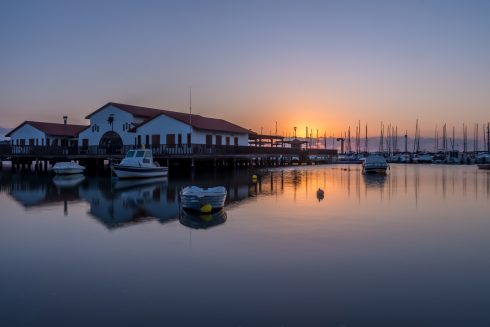
Location and amenities
The Mar Menor is a salt water lagoon separated from the Mediterranean Sea by a 22km strip of land called La Manga. Los Alcázares sits on the shore, directly north of Cartagena, and is just off the A-P motorway. The nearest airports are Alicante and Murcia, both just a 30-minute drive away.
The resort has a wide range of tourist amenities including ice cream parlours, cafes and restaurants, and a nightclub, many of which are located on the ‘main drag’. There are plenty of commercial centres conveniently close, while for local supermarket shopping there’s Mercadona, Dia and Lidl. For chilling out afterwards, you have Blue Flag beaches, the nautical area, and the lagoon.
Additional amenities for residents include dentists, doctors, a hospital, international school, private school, and a beauty parlour. There is a public barbeque area, a children’s park, and even a dog park. The area has various motorhome parks where ‘van lifers’ are living their dream.
This part of Murcia has a temperate climate, with over 320 sunny days per year; long hot, balmy summers and mild winters; and warm spring and autumn seasons. Whether you enjoy action adventure, golf and watersports, or simply relaxing on a beach, the weather won’t let you down.
Beaches and harbour
Famed for its fishing and maritime activities, Los Alcázares has a seafront that stretches for seven kilometres, and seven different beaches: Las Salinas, Los Narejos, Las Palmeras, Del Espejo, Manzanares, Carrion, and La Concha (some of which have disabled access). There’s a marina development, a nautical club, and a 5.5km coastal walk. The open market by Manzanares beach is one of the best places to buy fruit, vegetables and homewares.
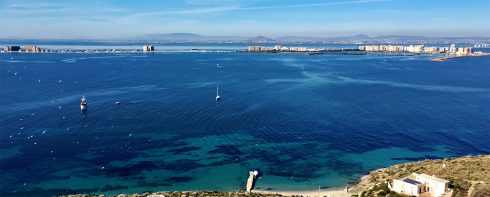
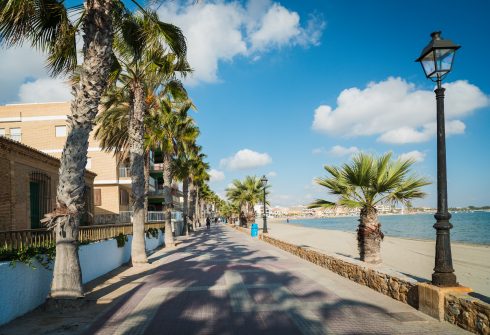
The popular nautical club, located at the end of La Concha beach, has a large boardwalk area, mooring for many yachts and smaller craft, a restaurant, and sunbathing area. Open to the public, it’s an ideal place to enjoy a ‘sundowner’, reasonably priced food, and marina views.
At Las Salinas, there’s a port with a marina development. This sits directly on the La Manga outcrop, with access to the Med. It comprises two L-shaped breakwaters: one that rises from the beach, and another providing four docks with a 20-metre entrance for boats to pass through. You’ll find restaurants, yacht hire, jet-ski hire, a diving and sailing school, kayak school, and a sling school here, as well as a crane, dry dock, and parking.
With an average annual temperature of 18C, visitors can enjoy the sea all year round. The waters contain a high concentration of salt and iodine, giving them medicinal properties. They were first used in spa treatments in 1904.
Famous landmarks
Los Alcázares has many landmarks – historical and modern – that are included on local ‘culture walks’, allowing you to learn about the area and keep fit at the same time.
Rame Tower
The Rame Tower is one of Las Alcázares most emblematic symbols. Lying on the border of Cartagena and Murcia, it was built at the end of the 16th century at the behest of Don Diego Bienvengud Rosuque, captain and alderman of Cartagena. It was designed to defend his domain from Barbary pirates. It may sit on the remains of an Arab tower recorded in literature dating back to the 13th century. The Rame Tower was one of a network of watchtowers built to monitor attacks along the coast.
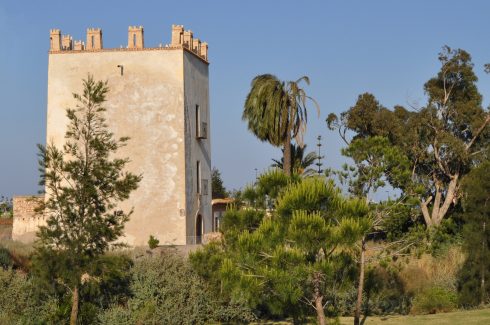
Rafts of Los Diegos
Dating from the second century BC, the Rafts of Los Diegos might be part of a hydraulic complex associated with a Roman villa. It was probably used in artisan-industrial work, such as water storage for agriculture, esparto grass treatment, clay settling or salting. Its walls are made of lime mortar, locked with small and medium-sized stones, the remains of mollusks, and small ceramic fragments.
Aerodrome
The 1915 aerodrome was Spain’s first seaplane base. The inaugural military seaplane flight took place in December 1915, and, from then until the end of the Spanish Civil War, the aerodrome was a major base for Spanish military aeronautics. In 1921, an Air Combat and Bombardment School was established. It became one of Spain’s leading military air schools where fighter and bomber pilots, and aerial observers were trained by skilled aviators. The aerodrome had a 1,000 x 600m airfield, along with hangars, workshops, a radiotelegraph station, railway branch, and seaplane docking ramps.
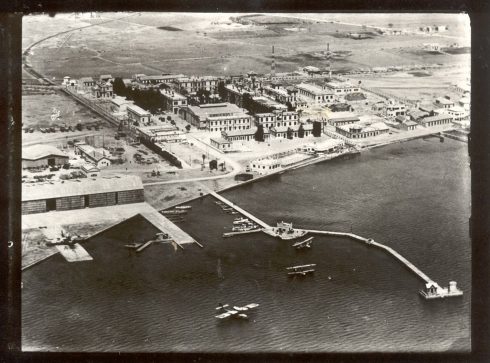
Spa La Encarnacion
Built in 1904 and open to this day, Spa La Encarnacion was the first hotel in Mar Menor and is possibly the oldest hotel still in operation in Murcia. It took advantage of the local waters to offer therapeutic thermal treatments. Guests would come to take heated seawater baths in the marble bathtubs. The building has preserved its original appearance, and has an extensive interior patio, and the thermal baths and marble tubs.
Sculptures
Among the more modern visitor attractions, there is a sculpture on the seafront of the famous comic actor José Sazatornil (‘Saza’) by Armando López Gullón. Saza once won the Goya Award for Best Supporting Actor and spent many summers in Los Alcázares.
Monument to the Fishermen, created in 1998 by Manuel Nicolas Almansa, is a tribute to the seafarers of Los Alcázares. The sculpture depicts a fisherman with a sorrowful look on his face dragging an empty net after a hard day’s work. Behind him, mounted on seahorses, are two mermaids, symbolising the Mar Menor and Mediterranean Sea.
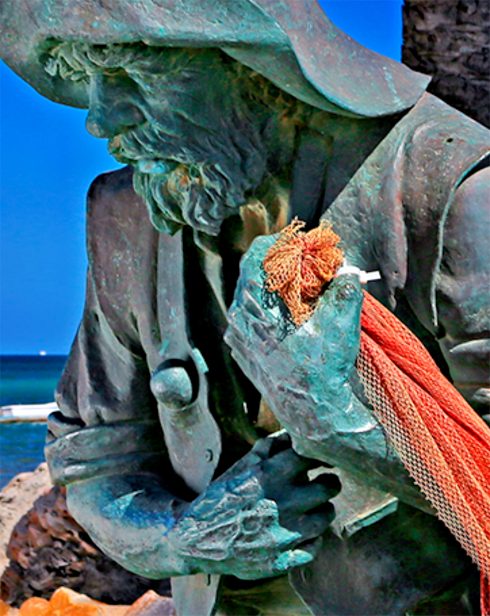
Property
Developments in the Los Alcázares area offer modern accommodation options along wide boulevards, while the traditional Spanish homes are more typically found in the older streets. The town is divided into three parts: Los Narejos, with traditional housing where permanent residents generally live; the town centre with apartments that are mainly rented by holidaymakers; and the old town, which is traditional and Spanish.
According to recent data, in Los Narejos and the old town, it’s possible to buy an apartment for €45,000, while a villa on a decent plot might cost €190,000. A town centre apartment will set you back around €110,000 and a villa around €360,000.
Key local events
AT Easter (Semana Santa), the town becomes a time machine, returning to the 16th and 17th centuries when Berber pirates marauded the coastline. The history of Barbary pirates is celebrated with the re-enactment of Barbary Raids.
This is an area with many fiestas. As well as the Barbary Raids, there’s San Juan on June 23; the fiesta of Lomas del Rame in July; festivals of the sea in July and August; Punta Calera fiesta on August 2; Day of the Virgin on August 15; International Week of the Garden and Sea in August; Surfari Mar Menor in October; the local autonomous community fiestas; Cauldron Day on October 12 (large cooking pots appear); Halloween on 31 October; the town’s patron saint fiesta on December 6; and Christmas celebrations which include a special night-time race. You won’t be bored, but you might need a rest!
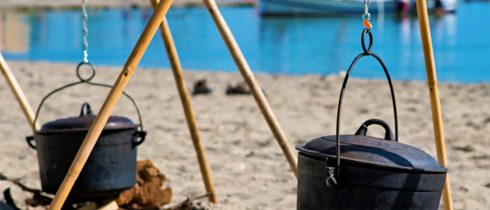
Where to stay and eat
Los Alcázares offers a range of accommodation, including pensions, aparthotels, and hostels. Some popular options are Hotel Costa Narejos, 525 Hotel, Hotel Cristina, Hotel Spa Torre Pacheco, and Hotel Traina.
As it’s a diverse resort catering for different nationalities, eateries include English, Scottish, Italian, Spanish, Bulgarian, Indian, Asian, Irish, American, Mexican, fusion, fish and chips, roof terrace restaurants, sports bars… whatever takes your fancy.
The area is strong on seafood, tuna, salted fish, stews… and also sausages.
For seafood lovers, Restaurante El Patio is a must-visit, with its fresh catch of the day and extensive wine list. Restaurante La Tropical serves traditional Spanish dishes, while Restaurante La Encarnación offers Mediterranean cuisine in a historic building with a beautiful terrace.
For vegetarians and vegans, there are several options such as Restaurante Vegetariano la Bohemia.
Other popular options are Spinosa seafront bar, La Playa with its coffee and mince pies, Chato, Galin’s, Zarcos cocktail bar, and Pearl’s Plaice. You’ll also find traditional British pubs, such as the Tipsy Thistle and The Crown, which serve beer from the UK. There’s even a Burger King.
Things to do
- Take a cruise: There are passenger routes to the Mar Menor Islands, Isla Grosa and Perdiguera Island. Boats for the last two destinations specify they are ‘with bathroom’, so watch out for the boats that are ‘without’.
- Enjoy a stroll around the old town, which is more traditional in contrast to the modern developments.
- Walk the ‘10,000 paces’ path along the seafront. You’ll see how far you are along the route as you take in all the beaches.
- Play golf: Roda Golf Course is the nearest to Los Alcázares, but there are several other clubs within a short distance, including La Manga, Torre Pacheco, Las Ramblas, Campoamor, Villamartin and Mosa Trajectum.
- Visit the salt lake: a 30-minute drive will take you to the Parc Natural de Las Lagunas de La Mata y Torrevieja (the Natural Park of the Lakes of La Mata and Torrevieja).
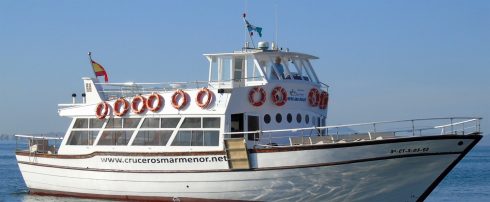
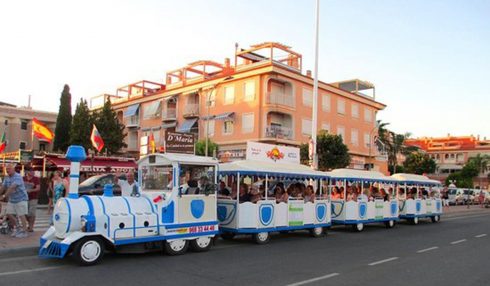
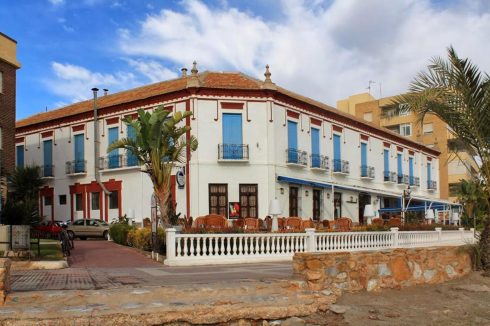
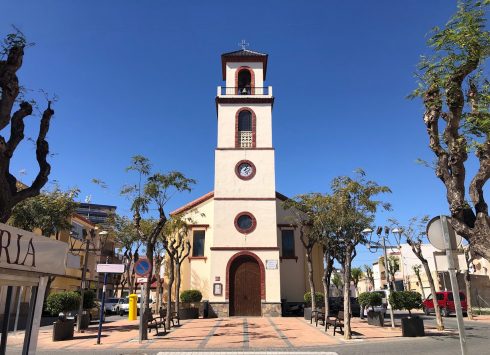
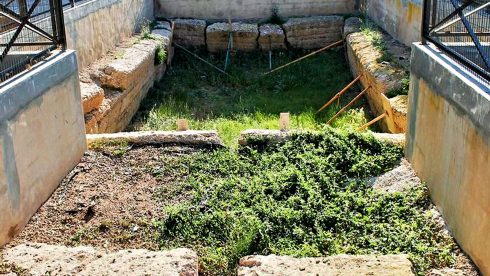
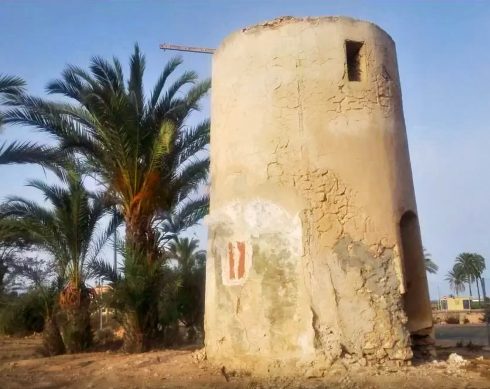
Fishing museum to open
The Los Alcázares town hall is repurposing an old dining room at the aerodrome to create a museum and interpretation centre dedicated to the fishing history of Mar Menor. This will display a collection of restored tools and other items from Francisco Javier Olmos, a descendant of the ‘Los Luisos’ fishermen lineage, who has written several books on the topic. Paco ‘El Luiso’, as he’s known, is also providing an authentic 112-year-old ‘lute’ (fishing boat).
Take a hike
Discover the area’s multiple attractions on either of two main walking routes.
In Los Alcázares, visitors can stroll to:
- Rame Tower – built in the 16th century, this is one of Los Alcázares’ main landmarks.
- Monument to José Sazatornil – the statue to commemorate comic actor, “Saza”, is on the seafront.
- Hotel Balneario La Encarnación – built in 1904, this spa hotel was the first in Mar Menor and is open to this day, retaining many original features.
- Fisherman monument – created in 1998 by Manuel Nicolás Almansa, this depicts a local fisherman returning empty-handed, with two mermaids behind.
- Monumento al Voluntario – this work by Pedro Jose Garcia Andreu is a tribute from the town to all those volunteers that help make Los Alcazares a better place to live.
- Los Alcázares military quarters – a 1915 aerodrome, this was Spain’s first seaplane base and trained fighter pilots to high standards.
- Church of our Lady Asunción Los Alcázares – this Catholic church holds one mass a week in English, on Saturdays.
- Mill of Uncle Manuel Lambertos – a century-old windmill that was used to run a water wheel that irrigated alfalfa crops.
- Park Aljibe Colorao – one for the younger family members, with a colourful playpark at the end of your tour.
In Los Narejos, you can take in:
- La Hita beach – check out the nearby small wetlands and old salt mines.
- Los Diegos Roman baths – an example of Roman enterprise, dating to the second century BC.
- Miners’ train of Los Alcázares – finish off with another children’s attraction: the El Habanero tourist train. Choo, choo!
READ MORE
First museum dedicated to Mar Menor in Spain’s Murcia will celebrate fishing
Click here to read more Mar Menor News from The Olive Press.

